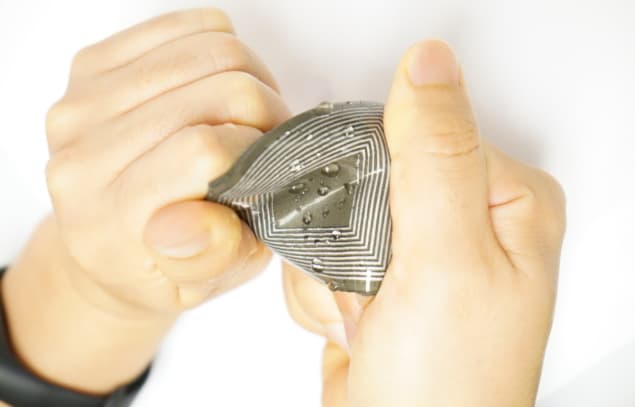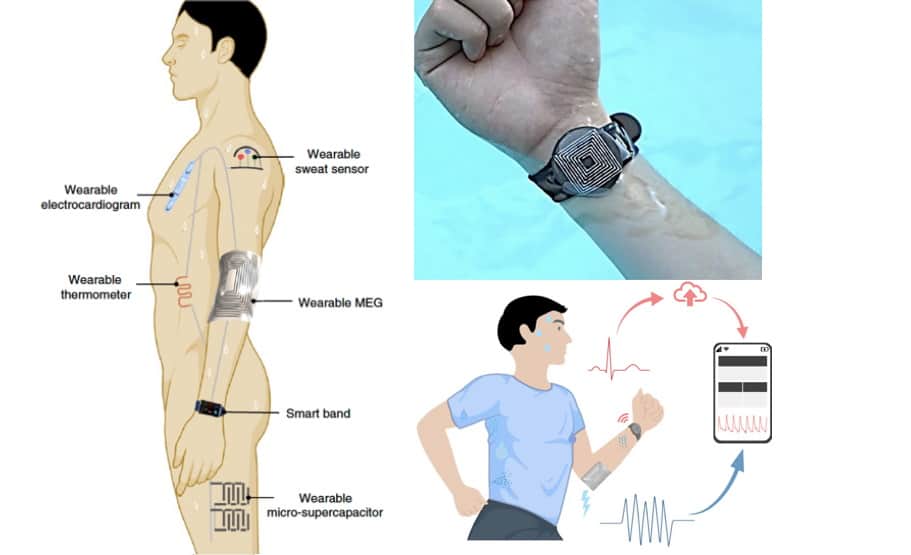
The future of bioelectronics – including wearables, implantable devices and smart technologies – hinges on the ability to sustainably power devices. A number of approaches for converting biomechanical energy into electricity have been introduced, including piezoelectrics and triboelectrics, which function by deriving charge from compressing or contacting materials. Unfortunately, these techniques’ suboptimal electronic properties and vulnerability to ambient humidity limit their effectiveness.
The answer could lie in magnetoelasticity, in which a material’s magnetic properties change under mechanical stress. This effect is usually observed in rigid metal alloys, which have mechanical moduli significantly higher than that of human tissue (they are very stiff). As a result, such materials are unsuitable for biomechanical energy generation. Researchers led by Jun Chen at the University of California, Los Angeles’ Samueli School of Engineering have overcome this difficulty by formulating a new soft magnetoelastic polymer blend. They share their results in Nature Materials.

The team created the porous, soft magnetoelastic material by dispersing micromagnets in a silicone polymer matrix. These micromagnets induce the inherent magnetic behaviour of the system so that when the elastomer is compressed, the magnetic field changes. The authors hypothesize that this change in magnetic flux density is caused by a realignment of “chains” of micromagnets under mechanical deformation. They were also able to model this effect theoretically.
In order to harness the energy induced by the magnetoelastic effect, the researchers positioned a magnetic inductor on top of the silicone layer. This inductor converts changes in magnetic fields into an electrical current. Therefore, magnetic deformations can be turned into electrical energy to be used according to the desired application. The authors call this electrically responsive system a “soft magnetoelastic generator”.
Monitoring human health
Many applications for wearable power generation could exploit the electrical coupling provided by a magnetic inductor. For example, with gentle hand tapping, the authors were able to charge capacitors of varying size within seconds. Another magnetoelastic generator was able to drive a commercial wearable thermometer to monitor body temperature.
In addition to powering wearables, the generator could also be used to sustainably power implanted bioelectronic devices, which remains difficult with current technology. Acoustic waves and ultrasound can be utilized to transfer energy to medical implants through tissue. To demonstrate this effect, the researchers implanted a magnetoelastic generator in porcine tissue and excited the tissue using ultrasound. The generator was able to output a power of over 30 µW, a value comparable to that used by bioelectronics such as pacemakers and neurostimulators.

Lastly, the researchers tested the device’s capacity to act as a cardiovascular monitor. They found that a generator worn on the wrist could detect a human pulse, even when wet. In this scenario, the natural arterial pulse deformed the magnetoelastic generator, inducing a current in the inductor. This sensor was even able to function underwater and through sweat, as the material is inherently waterproof.
Moving forward, Chen’s team aims to further augment the electrical output of the generators by optimizing the device’s design. This work opens a new avenue for practical human-body-centric energy, sensing and therapeutic applications.



